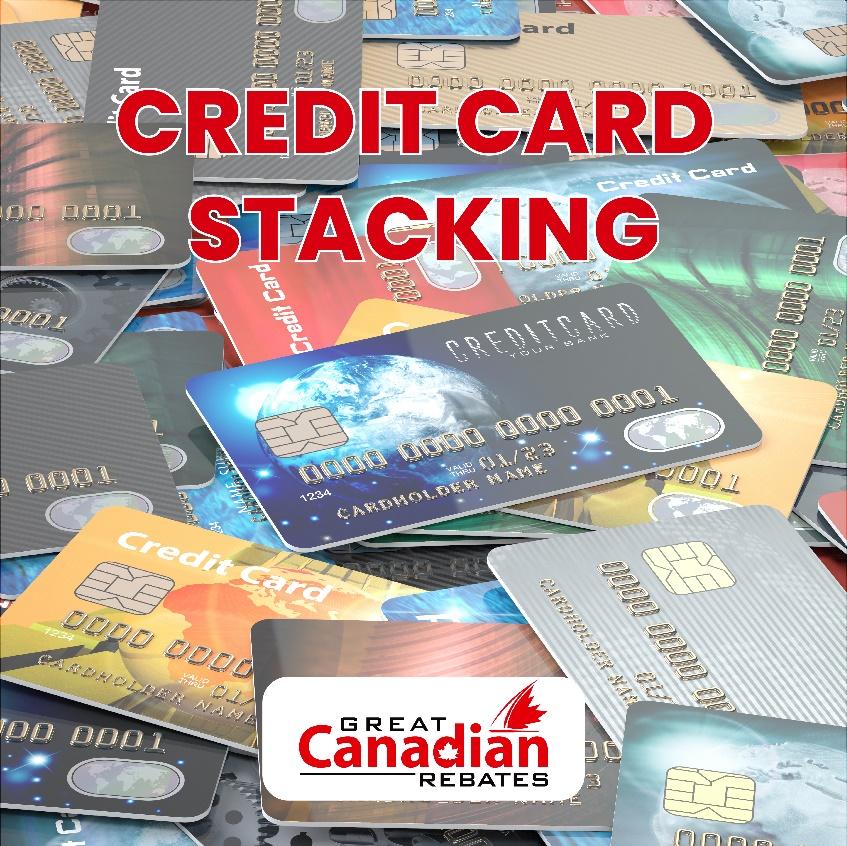The first time you realize that a single credit card isn’t enough to maximize your rewards, everything changes. You start seeing every transaction as an opportunity to earn more—whether it’s cash back, travel points, or retailer-specific perks. That’s the essence of credit card stacking in Canada, a strategy that turns everyday spending into a carefully optimized system for accumulating rewards.
Savvy Canadians have mastered the art of using multiple credit cards in a way that ensures they always get the best return on their purchases. Instead of relying on one all-purpose card, they combine different cards to leverage category bonuses, sign-up offers, and exclusive partnerships.
This guide will explore how credit card stacking in Canada works, who benefits the most from it, and which top-rated cash back credit cards help maximize rewards. Whether you’re aiming for free flights, statement credits, or Amex cash back, stacking the right cards can transform your spending habits into a long-term financial advantage.
Why One Credit Card Isn’t Enough
Most credit cards reward you in specific ways. A cash back card might offer 2% on groceries but only 1% on dining. A travel card could earn points on gas but not on entertainment. A retailer’s co-branded card may have a great in-store discount but lack value elsewhere.
Relying on just one card means leaving potential rewards on the table. Credit card stacking solves this by ensuring every purchase is optimized. If one card excels in travel rewards while another specializes in dining perks, using both strategically allows you to maximize your return on spending.
The Key Components of Credit Card Stacking
Successful credit card stacking in Canada requires a plan. The best stacks include a combination of the following:
- A Cash Back Card for Everyday Purchases
A strong cash back card ensures you earn on all purchases, regardless of category. These cards provide a base level of rewards that fill in the gaps where other specialized cards fall short. - A Travel Rewards Card for Flights and Hotels
If you love to travel, stacking a premium travel card alongside your cash back card lets you take advantage of airline partnerships, hotel perks, and point transfers. - A Retailer-Specific Card for Extra Discounts
Many Canadians shop at the same grocery stores, gas stations, and retailers regularly. A store-branded credit card can offer additional discounts, loyalty bonuses, and exclusive benefits.
Best Credit Cards for Stacking in Canada
Stacking works best when you combine cards that complement each other. Here are some of the best options available:
1. The Ultimate Cash Back Base: Amex SimplyCash Preferred
A strong foundation for any stack is a cash back card that covers everyday purchases. The Amex cash back SimplyCash Preferred earns a remarkable cash back on all purchases, making it a reliable card for expenses that don’t fit into bonus categories.
2. Travel Rewards Powerhouse: American Express Cobalt
For those who spend heavily on dining and travel, the Amex Cobalt is a must-have. It offers 5x points on restaurants, 3x on streaming services, and 2x on travel, making it the perfect complement to a cash back card.
3. Retail Loyalty Advantage: PC Financial World Elite Mastercard
Grocery shopping is a major expense, and the PC Financial World Elite Mastercard delivers exceptional value at Loblaw-owned stores. With up to 30 PC Optimum points per dollar spent at participating locations, it’s a key addition to any stack.
4. Flexible Everyday Spending: TD Cash Back Visa Infinite
For those who want to keep it simple, the TD Cash Back Visa Infinite offers solid cash back rebates on gas, groceries, and recurring bill payments, covering essential spending categories.

Who Benefits the Most from Credit Card Stacking?
Not everyone needs to juggle multiple credit cards, but for certain types of spenders, credit card stacking is a game-changer. By strategically using different cards for specific purchases, cardholders can unlock higher rewards, better perks, and greater overall value.
Frequent travellers benefit the most from this strategy. A cash back card for everyday spending ensures consistent savings, while a premium travel card maximizes points on flights, hotels, and foreign transactions. By combining the two, travellers can stretch their rewards further—whether through discounted airfare, complimentary travel insurance, or airport lounge access.
Families with high grocery and gas expenses also gain significantly. A top-rated cash back credit card with bonus rewards on groceries can be paired with a store-specific card to maximize savings. This ensures that every dollar spent on essentials contributes to valuable rewards.
Business owners and freelancers have the most to gain by stacking credit cards. A combination of cards tailored for office supplies, dining, and digital advertising expenses allows them to earn more rewards while keeping their business and personal expenses separate. With the right approach, credit card stacking turns routine spending into a powerful financial tool.
Avoiding Pitfalls in Credit Card Stacking
The strategy of credit card stacking in Canada offers undeniable benefits, from maximizing cash back card rewards to unlocking travel perks. However, with great rewards come potential risks. Managing multiple credit cards requires discipline, strategic planning, and an understanding of how different rewards programs work. Failing to navigate these aspects properly can lead to financial missteps that outweigh the advantages.
Juggling multiple credit cards means staying on top of various payment due dates, interest rates, and rewards structures. Missing a payment can result in late fees and damage your credit score, reducing the long-term benefits of stacking. Many Canadians rely on budgeting apps or spreadsheets to monitor balances, due dates, and spending categories.
A well-organized system ensures that every purchase is optimized for maximum rewards. For example, an Amex cash back card may offer higher returns on groceries, while a different card might be better suited for travel purchases. By tracking where each card excels, you can allocate spending strategically and avoid unnecessary interest charges.
One of the biggest mistakes in credit card stacking in Canada is overspending simply to earn more points or cash back. It can be tempting to justify extra purchases by focusing on the rewards they generate, but this can lead to financial strain and even credit card debt.
Credit card stacking should align with your regular spending habits, not encourage unnecessary expenses. The best strategy is to use rewards-earning cards for purchases you were already planning to make. Paying off balances in full every month prevents interest from negating the benefits of top-rated cash back credit cards.
Many Canadians focus on accumulating points but overlook how they can be redeemed. Not all rewards programs offer equal value. Some impose restrictions, such as blackout dates on travel redemptions, category-specific limitations, or minimum redemption thresholds. Before applying for a new cash back card, review the redemption policies to ensure they align with your financial goals.
For instance, an Amex cash back card might allow direct statement credits, making redemptions simple and flexible. Other programs may require converting points into travel rewards or merchandise, which might not always provide the best value. Understanding the fine print prevents frustration and ensures you can fully leverage the benefits of credit card stacking.
The key to successful credit card stacking in Canada is responsible financial management. When used wisely, stacking multiple cards allows Canadians to maximize rewards while keeping spending in check. By staying organized, avoiding unnecessary purchases, and understanding redemption policies, you can reap the benefits without falling into common pitfalls.
The Future of Credit Card Stacking in Canada
As financial technology evolves, credit card stacking in Canada is becoming even more refined. AI-powered apps are helping consumers track and optimize rewards, while banks are offering more customizable perks to cater to specific spending habits.
We’re also seeing a shift toward dynamic cash back rebates, where rewards are adjusted in real-time based on user behaviour. This means that in the near future, Canadians could see even more ways to maximize their spending power through strategic credit card use.
Conclusion
For Canadians looking to get the most out of their spending, credit card stacking in Canada is one of the smartest strategies available. By combining top-rated cash back credit cards, travel rewards, and retailer-specific options, you can ensure that every purchase works in your favour.
The key is selecting cards that complement your lifestyle and understanding how to optimize each transaction. Whether you prefer Amex cash back, travel perks, or retailer loyalty points, the right combination of credit cards will help you earn more while spending the same amount.
Apply For the Best Rewards Credit Card in Canada
If you’re looking for cards that offer fantastic cash back or credit card rebates, you’ve come to the right place! Great Canadian Rebates is an online platform that lets Members compare credit card options available in Canada and apply for the one that best suits their financial and lifestyle requirements.
It’s free to join, and Members can also choose from over 700 well-known merchants and enjoy great rebates, deals, and discounts. With a plethora of credit cards to choose from, Great Canadian Rebates is a top site for Canadians looking to get their hands on a top-rated cash back credit card.


